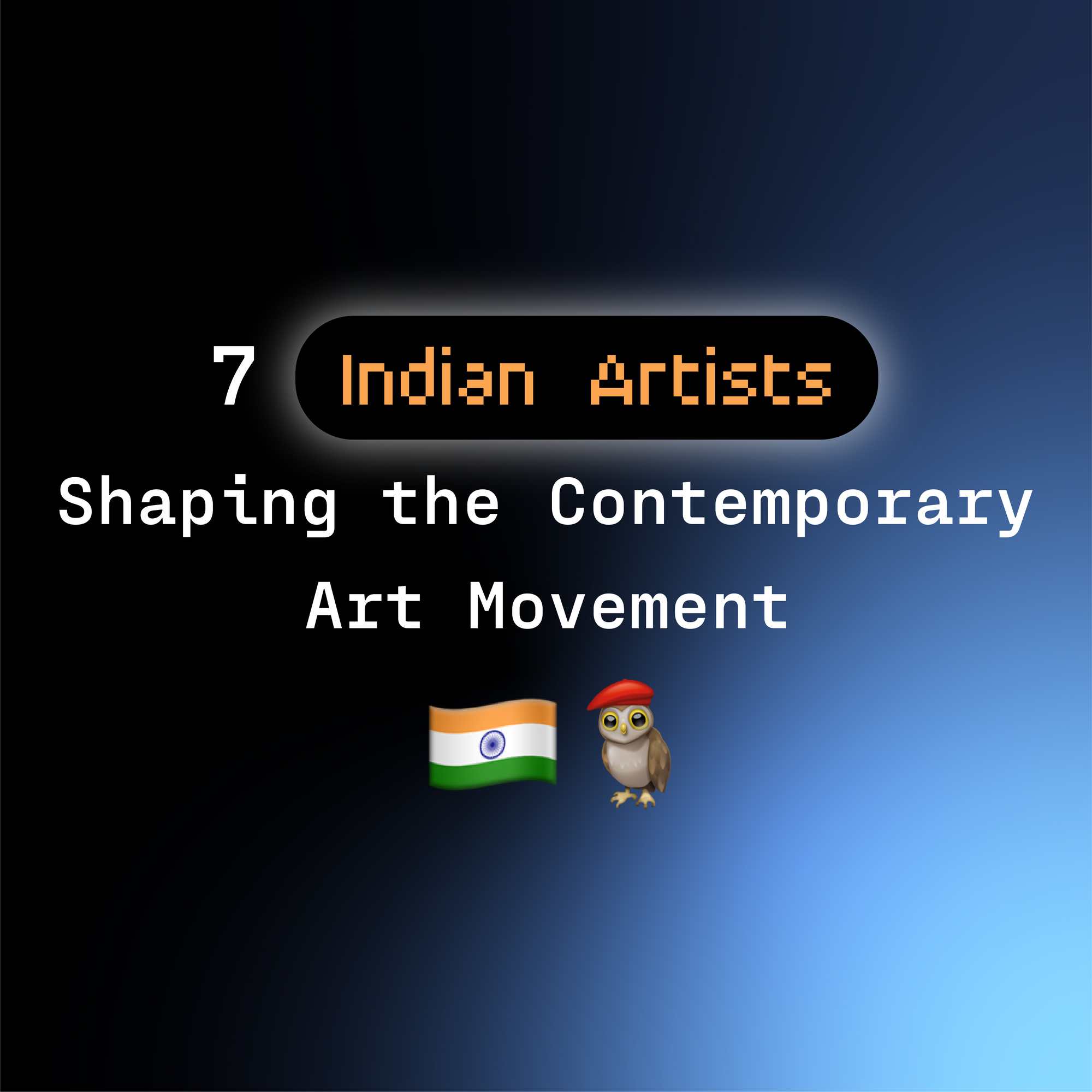7 Indian Artists who are Shaping the Contemporary Art Movement
By Terrain.art | Feb 3 2022 · 6 min read
Deeply personal and yet intensely political, here are artworks of seven Indian artists who are transforming the contemporary art scene.
Artists are political beings. They respond to contemporary political and social issues through their artistic medium to not only make the viewers aware of these issues but also make public their points of view. Contemporary Indian artists are no different. They continue to deal with fraught issues of decolonization, social and economic inequality, gender injustice and the fallout of economic liberalization of the Nineties through their artworks in interesting ways that are also deeply personal. We have rounded up 7 Indian artists who are shaping the discourse of contemporary Indian art.
A Short History of Modern and Contemporary Indian Art
In some senses, modern Indian art arrived in India with the coming of the British. Early colonial painters were more interested in making portraits of Indian princes and princesses, who commissioned them in exchange for handsome sums of money. It took Raja Ravi Verma to develop a distinct modern Indian aesthetic by combining western artistic practices with Indian subjects. Next came the Bengal school of artists (Abanindranath Tagore, Nandalal Bose, etc.), who abjured western aesthetics. After independence, Bombay’s Progressive Artists’ Group came into prominence. Although the group lacked a cohesive artistic style, it managed to blend contemporary European modernist styles with Indian artistic themes to create an entirely new artistic idiom. With economic liberalization, the proliferation of art galleries, and increasing exposure to the globalized world, contemporary Indian artists, who began their careers roughly during the Nineties, continued to deal with themes of inequities, gender issues, and persecution of religious and ethnic minorities in India.
Indian art has indeed come a long way. Despite the relative lack of international art festivals, Indian artists continue to thrive the world over. Private galleries have filled the void that lack of government support has left behind. Online art platforms now sell artworks of young Indian artists directly to buyers, cutting through the quagmire of art collectors and agents. Platforms like Terrain. art are now offering NFT-backed art pieces to consumers. Overall, the future for Indian art looks bright and here are some of the most talented contemporary Indian artists and their artworks.
Sahej Rahal
Dystopian, beguiling, and weirdly beautiful. Award-winning artist Sahej Rahal weaves together mythologies, local legends, and hidden histories to create beautiful, otherworldly creatures who somehow have slipped through the cracks of the space-time continuum and have come to inhabit our world. He creates stunning paintings, installations and even video art often using digital ephemera, everyday detritus, salvaged furniture, and even stock footage.
Arinjoy Sen
Inspired by Mughal architecture, Arinjoy Sen’s digital works deal with contested and geopolitically sensitive terrains of Sundarbans and Kashmir. Sen reconfigures space and time through his heavily embellished, Mughal miniature- and Kalighat patachitra-inspired archival prints to tell stories of shared histories, myths and collective resistance of communities living at the margins of the postcolonial society.
Sukanya Garg
Art for Garg has been a transformative process. She was working in the field of international development when a chance encounter with Monet’s Water Lilies convinced her that her true calling was painting. In her works, Garg explores the connection between the human body and the universe through cells – the basic building block of all life forms on earth. She explores the fragility and the resilience of human life while taking us on a journey of the body’s interiority and the space of the cosmos.
Kodanda Rao Teppala
Painter and printmaker Kodanda Rao Teppala creates visually stunning, colourful paintings using imageries of groups of people caught in transitory situations – people watching a solar eclipse, passengers embarking on a plane, a trapeze artist falling through a blue space, and suchlike. The randomness of the events is what gives his works a unique edge.
Aditi Aggarwal
Aggarwal’s digital collages showcase unfinished, under-construction spaces largely in an urban setting, in which the artist’s body is placed against eroding structures of urbanity, environmental degradation and volatile political climates.
Jayeti Bhattacharya
Spaces that we inhabit seem to be the primary concern for Jayeti Bhattacharya. Using vintage photographs, watercolours and mud, she explores the ideas of home, migration, belonging and memory. Like the discarded old photos she collects, her paintings tell poignant stories of human belonging and intimacy.
Al -Qawi Nanavati
Nanavati draws upon the process of repetition as a means of spiritual communication with her deceased mother. She works with a wide variety of mediums and artistic styles including printmaking, stitching, weaving to bring herself closer to her mother’s presence. Shorn of extraneous frills, her paintings and mixed media works are minimalist and deeply contemplative.

